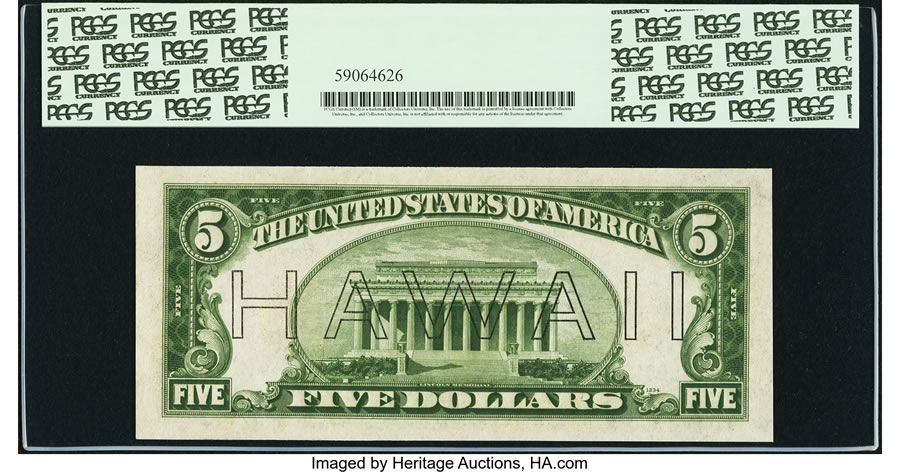SPECIAL CURRENCY ISSUES DESIGNED TO BE USELESS IN ENEMY HANDS
By Dustin Johnston
Currency has always been used as a weapon of war. In the absence of hard coin, governments issue currency to pay for war efforts when treasuries are desperate. While currency can be a tremendous weapon in war, it can also be a liability if it falls into the wrong hands.
U.S. CURRENCY
EVENT
ANA WORLD’S FAIR OF MONEY CURRENCY SIGNATURE® AUCTION 3573
Aug. 13-19, 2019
Live: Chicago
Online: HA.com/3573a
INQUIRIES
Dustin Johnston
214.409.1302
Dustin@HA.com
Enlarge

America’s involvement in World War II left the continental United States mostly unaffected. The Atlantic and Pacific provided natural barriers from invasion. Hawaii was a liability as the attacks on Pearl Harbor illustrated, and North Africa was a major outpost for U.S. troops fighting in Africa and southern Europe. Money was still needed in Hawaii and for troops in North Africa. Since both theaters were susceptible to invasion, special currency issues were printed for use in each location.
In order to prevent any currency taken by the enemy during an invasion, new and distinct designs could be rendered useless at any time and unusable by enemy forces for their own war efforts. In Hawaii, Silver Certificates were still issued, but with brown serial numbers and seal, instead of the usual blue. Additionally, “HAWAII” was overstamped twice on the face, and once across the entire back of the notes. Silver Certificates were also issued for use in North Africa, with a slightly less conspicuous design; only the blue seal was changed to yellow to designate them for use in that theater.
Enlarge

Enlarge

As was the case with my grandfather, William Wiggins, who served for Gen. George S. Patton in the 5th Armored Division, most veterans and descendants carried some currency back from their service. These notes are just part of their story.
Heritage’s upcoming Platinum Night auction at the ANA World’s Fair of Money features one of the rarest of the North Africa Issues, a Fr. 2308* $10 North Africa Silver Certificate Replacement. It’s expected to realize at least $35,000.
 DUSTIN JOHNSTON is vice president of currency at Heritage Auctions.
DUSTIN JOHNSTON is vice president of currency at Heritage Auctions.
This article appears in the Fall 2019 edition of The Intelligent Collector magazine. Click here to subscribe to the print edition.

